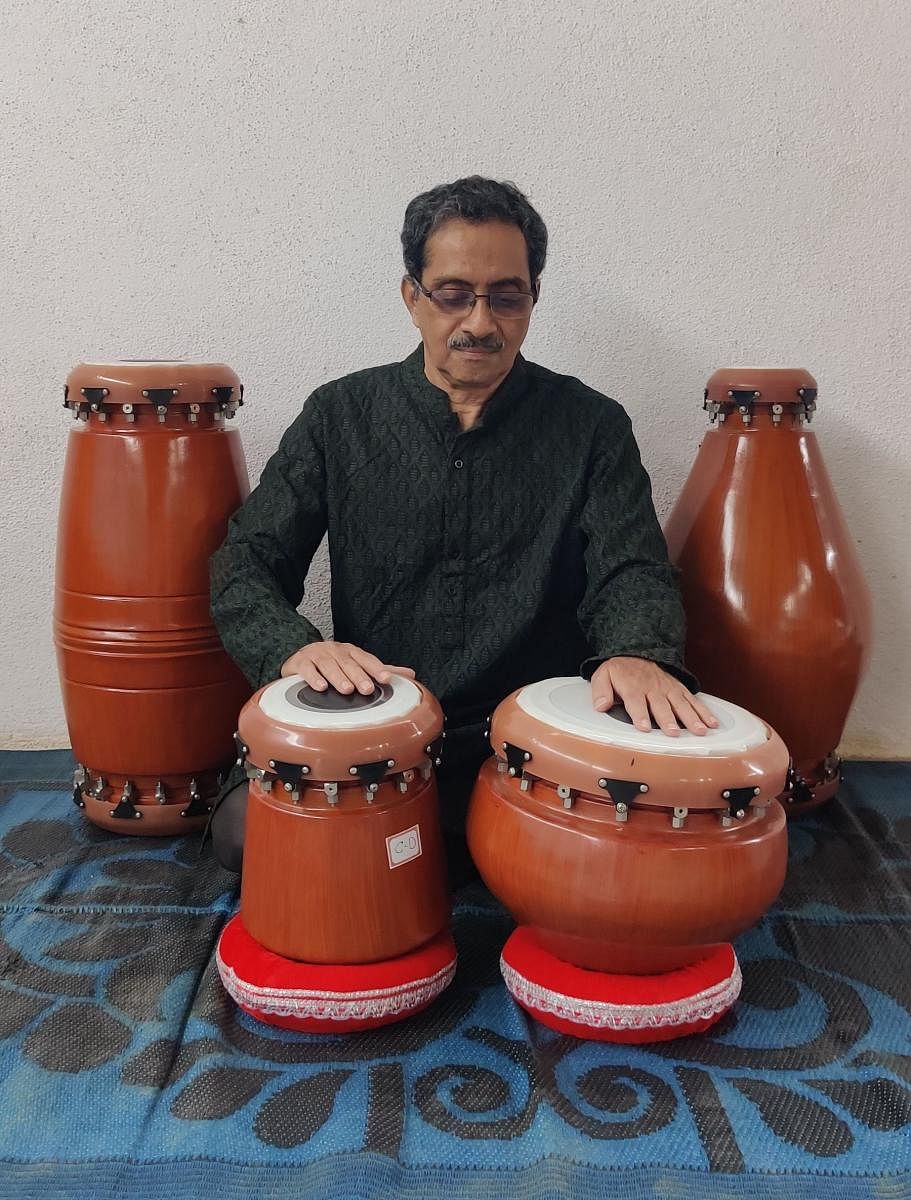
A Bengaluru-based vocalist, musicologist and physicist is making percussion instruments using innovative engineering materials and avoiding animal skins.
Dr K Varadarangan has spent about a decade developing his instruments, many of which are now being used on the stage.
In an interview with Showtime, he says he was moved by the cruelty against animals to innovate and create synthetic instruments.
When did you first think of this idea? What scientific theories helped your work?
As a vegan, it was disturbing for me to watch animals getting killed cruelly to serve our purposes. The mridangam, tabla, and other instruments are manufactured from the skin of healthy cows, buffaloes, and goats. As I had decided not to buy instruments made of animal skin, I took an unconventional route in 2010 to make a mridangam. Coming from a science background, I had a fair knowledge of mridangam acoustics. Sir C V Raman had theoretically analysed the harmonic overtones of animal-skinned mridangams decades ago. At the Indian Institute of Science, B S Ramakrishna had done a mathematical analysis to check the density variations of the membranes used in percussion instruments. Following their principles, I decided to make a mridangam.
Tell us about the synthetic instruments you have created over the past decade.
We at Karuna Musicals have made three varieties of mridangams (for men, women, and children), three varieties of tabla (high, medium, and low pitch), one variety of khol--mostly used in bhajans — and one variety each of the dholak and maddale. It took me five and a half years for the mridangam, one and a half years for the tabla, one year for the khol, and six months each for the dholak and the maddale. I wish to work on dholki and chande next.
What challenges did you face?
Western drums are made from synthetic materials. I used to wonder why mridangams and other Indian percussions instruments can’t be made from the same material. So I chose graded, thick polyester film for making mridangam drum-heads. The instrument has an important part called karane. Selecting the right material to make this part was challenging as the ones made from polyester film would peel off. After striving for eight months, I found that a bond of black rubber and polyester film was ideal to make the karane. I have used this bond in both the mridangam and the tabla.
What are the advantages of using synthetic mridangams?
They weigh only about 5 kg as compared to the regular ones that weigh about 12 kg. The synthetic mridangam has a robust nut-and-bolt system for easy tuning. The drum heads have a longer life and can easily be replaced. Artistes can do it by themselves. The mridangam karanes last for five to six years, unlike the traditional ones that have to be replaced after three to six months, and sometimes, even after every concert.
These mridangams are cost-effective. They are priced between Rs 10,000 and Rs 12,000 as against Rs 20,000 to Rs 25,000 for traditional mridangams. Finally, these mridangams can be cleaned just with a wet cloth.
Have percussionists started switching to synthetic percussion instruments?
About 600 artistes across the country are performing with these instruments at their concerts. Students are training on synthetic mridangams and tablas. Some senior artistes have raised a few objections, as they think my invention goes against our musical traditions, but many have accepted it.
(Dr K Varadarangan can be reached at kvrangan@yahoo.co.in)